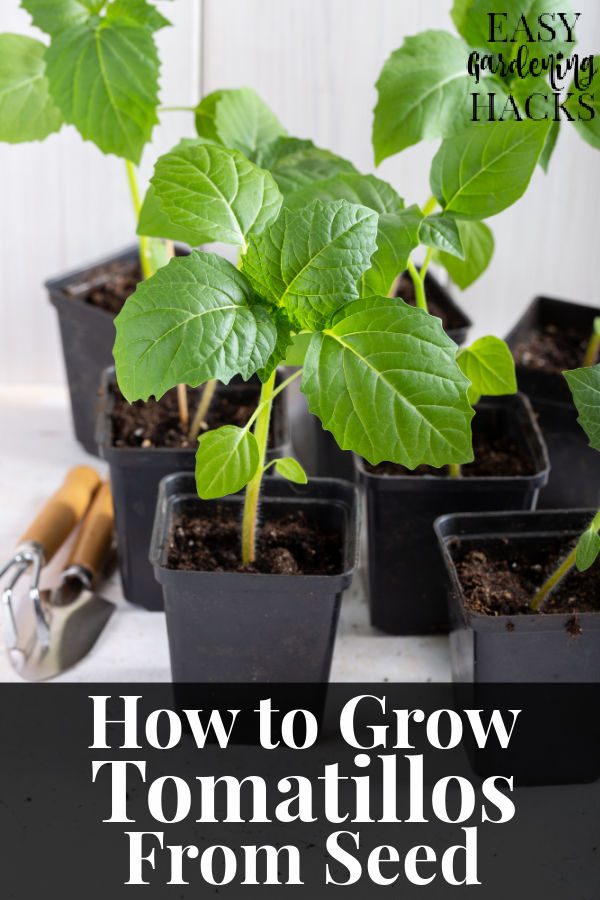Use these instructions to learn how to grow tomatillos from seed in your garden this summer. Includes tips for starting seeds inside or sowing them in the soil.

The tomatillo is the perfect accompaniment fruit. It makes excellent salsa, sauces and even jams. You have probably seen it in south of the border recipes most often. It can be treated almost like a tomato when growing it. Like the tomato, tomatillos like lots of warm sun to grow under and prefer to be transplanted when well established. Because the tomatillo has a growing season of about 70-80 days to mature into a harvestable fruit after transplanting, most gardeners start them indoors, although if you live in a warm enough growing zone, you could start them outdoors as well. Here are some tips for starting tomatillo seeds both indoors and out.
How to Grow Tomatillos from Seed Indoors
Start seeds indoors about 8-10 weeks before the last frost so you can have a good viable seedling to transplant when the time comes.
You can start seeds in a seed starting tray with a good seed starting soil mix. Choose a warm and sunny spot to grow your seeds and if you don’t have a warm spot, you may need to get a warming mat to keep your soil at a good 75-80 degrees.
- Moisten your soil.
- Place 2-3 seeds in each pot pushing them in gently about ¼ inch.
- Gently cover the seeds with soil.
- Keep the soil moist, but not soggy until the seeds germinate. This will take about 10 days.
How to Grow Tomatillos from Seed Outdoors
If you live in a warmer region, you can sow seeds directly in the ground. Make sure your soil is at least 75 degrees. You will also want to prepare the soil a bit by adding some compost to it. Choose a spot that is sunny as well.
Sow seeds about 12 inches apart for proper spacing. Place a few seeds on the soil and push it in about ¼ to ½ inch. Keep soil moist until you see germination in about 1-2 weeks.
You will also want to protect any seedlings that do start from the cooler nights if you still have them by covering at night. If they are not protected, you can end up with a plant that doesn’t produce.
Leave a Reply